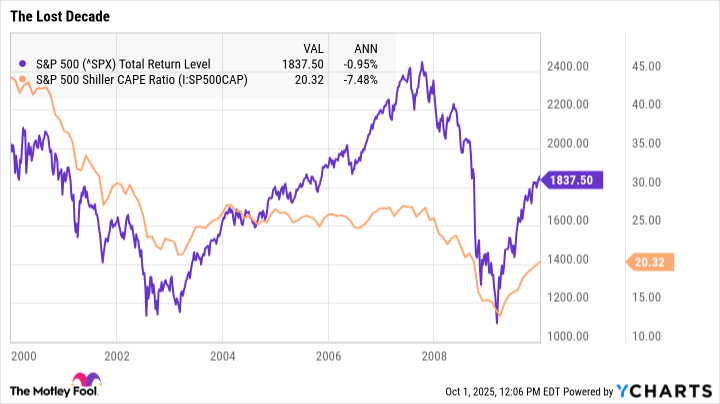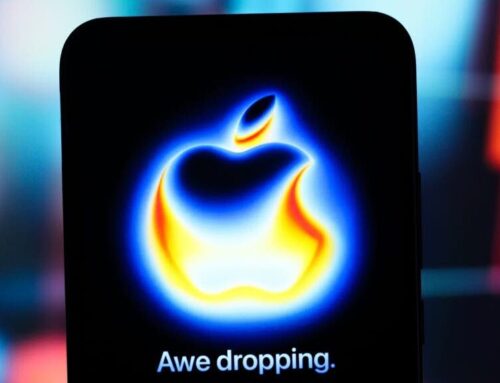Warren Buffett Is Sending Investors a $340 Billion Warning. History Says the Stock Market
October 5, 2025
Warren Buffett’s growing cash pile speaks volumes about the current state of the stock market.
One of the qualities that makes Warren Buffett one of the most successful investors in history is his patience.
He noted the importance of waiting for opportunities in his most recent letter to Berkshire Hathaway (BRK.A 0.70%) (BRK.B 0.68%) shareholders.
“Understandably, really outstanding businesses are very seldom offered in their entirety, but small fractions of these gems can be purchased Monday through Friday on Wall Street and, very occasionally, they sell at bargain prices. … Often, nothing looks compelling.”
Buffett’s willingness to wait for compelling prices has led him to sell more stocks than he bought for Berkshire Hathaway in each of the last 11 quarters. As a result, Buffett now sits on nearly $340 billion of investable cash and cash equivalents (excluding cash held in the railway business), looking for an investment opportunity.
Unfortunately, the stock market is sending a strong signal that there might not be very many compelling opportunities to find right now, and certainly not in Berkshire’s investable universe. As a result, Berkshire’s cash pile keeps growing.

Image source: The Motley Fool.
The massive warning to stock investors
Over the last few years, investors have pushed the prices of large-cap S&P 500 (^GSPC 0.01%) stocks significantly higher. However, fundamentals have failed to keep up.
As a result, stock valuations are now approaching record highs. Buffett’s preferred valuation indicator, total U.S. stock market value divided by GDP, dubbed the Buffett Indicator, has climbed above 200%. When the indicator reaches that level, as it did in 1999 and 2000, Buffett says, “You are playing with fire.”
Another indicator is also flashing similar warnings as the turn of the century. The Shiller P/E ratio has topped 40. The metric takes the 10-year moving average of inflation-adjusted earnings for the S&P 500, and divides that number into the current index value. The only other time valuations were this high was amid the dot-com bubble.
Here’s what history says happens next
History is quite clear about what happens when the Shiller PE has exceeded 40. Every single time, it has produced negative 10-year annualized returns.
There’s just one caveat: We’ve only ever had one prior period where the S&P 500 valuation climbed above a Shiller PE of 40. The dot-com bubble popping was followed in quick succession by the global financial crisis, which led to the so-called “lost decade.”
Data by YCharts.
History doesn’t repeat itself, but it often rhymes. And there’s no denying the fact that the Shiller P/E ratio is inversely correlated with 10-year forward returns. As such, as the S&P 500 valuation continues to climb higher, the expected returns going forward become worse and worse.
Considering Buffett is a value investor and heavily prefers large-cap U.S. equities, it’s no wonder he’s found very little to invest in over the last few years as valuations climbed. That said, that doesn’t mean there aren’t other opportunities that he’s found that could be even more beneficial for smaller retail investors.
The hidden message under Buffett’s $340 billion warning
It’s important to put Buffett’s position in context. Berkshire Hathaway is a $1 trillion U.S. company. Its marketable equity portfolio exceeds $300 billion. And when you combine that with its $340 billion cash position, there’s practically no other investment fund with as much cash to move as Berkshire. That’s severely limiting.
Buffett’s investable universe is only the biggest stocks in the market. And since he’s heavily focused on U.S. stocks, that means mostly S&P 500 companies.
That said, he’s found several excellent opportunities outside the S&P 500 recently. He’s notably invested billions in the five Japanese trading houses, including adding over $40 million to Berkshire’s investments in August. Despite the strong performance of the Japanese stock market in recent years, the Shiller P/E ratio remains well below its 25-year average. That led Shiller to maintain his projection for relatively strong returns from the Japanese stock market over the next 10 years in his most recent market forecast.
Even in the U.S., there remain ample opportunities for investors. While the S&P 500 has seen its valuation climb, the mid-cap and small-cap index hasn’t followed suit. What’s more, a handful of companies have driven the S&P 500 P/E ratio higher, while earnings haven’t necessarily followed suit.
There are still a good number of stocks with compelling valuations in the S&P 500 itself. Buffett has been a buyer when the opportunity arises, notably buying UnitedHealth last quarter, along with nine other stocks, most of which were on the smaller end of the Buffett’s investable universe.
The message for investors to take away is that many of the biggest companies in the United States look expensive right now. That’s weighing on the future expected returns of popular indexes like the S&P 500. But if you look beyond the biggest names in the U.S., there are still a lot of compelling opportunities that could produce better returns than the most commonly used benchmark index.
Search
RECENT PRESS RELEASES
Related Post




